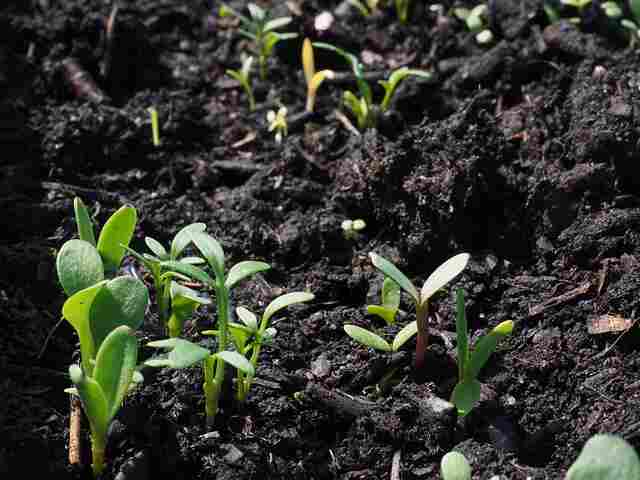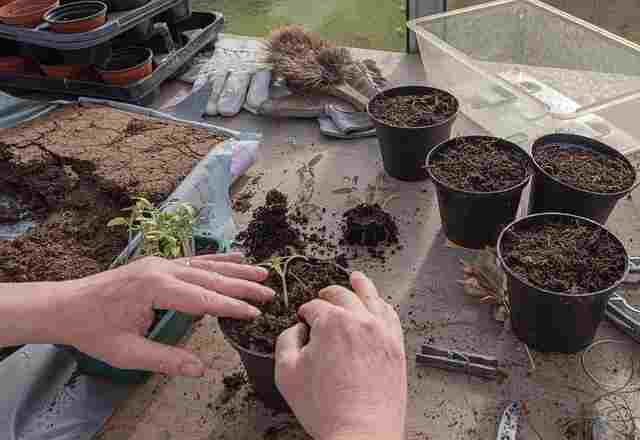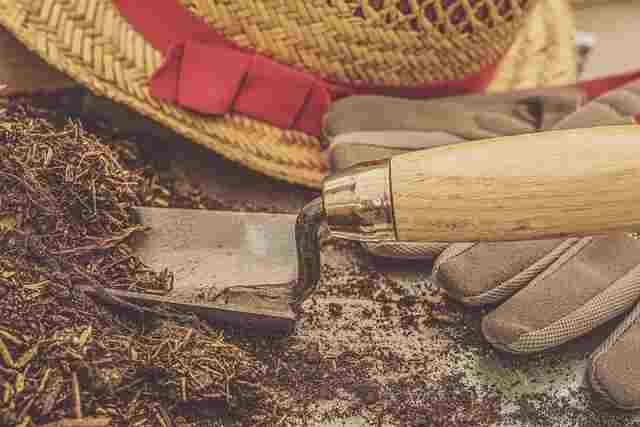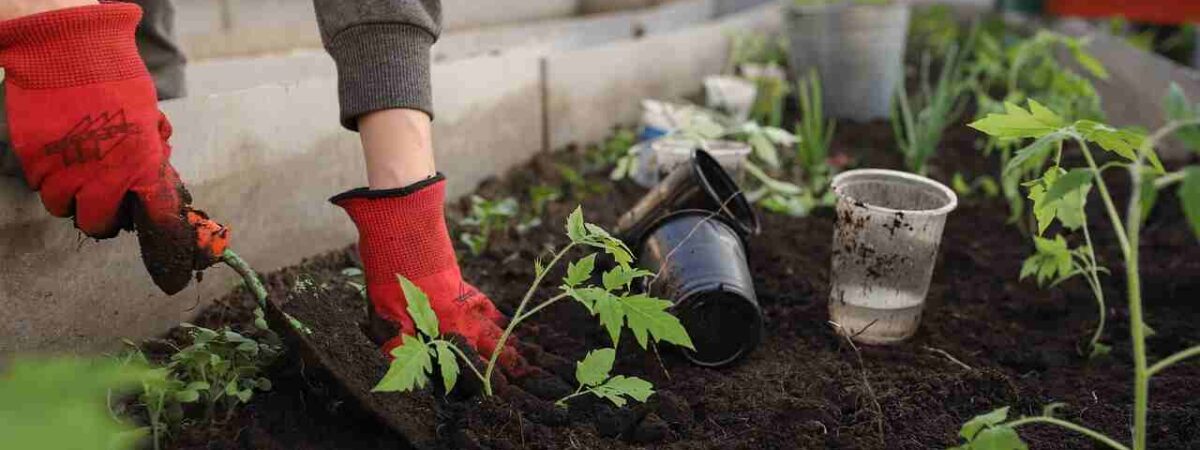When it comes to growing plants, the type of potting mix you use is just as important as the plants themselves. The right potting mix can make all the difference in ensuring healthy and thriving plants.
In this comprehensive guide, we will explore the world of potting mixes and help you choose the best one for your needs.
Explanation of potting mix
Potting mix, also known as potting soil or container mix, is a growing medium used in gardening to provide the necessary nutrients, drainage, and aeration for potted plants. It is a combination of various organic and inorganic materials such as peat moss, vermiculite, perlite, sand, and compost.
Potting mix is designed to be lightweight, well-draining, and able to hold moisture, making it ideal for container gardening.
Potting mix can be purchased pre-made from gardening stores, or it can be made at home by mixing the various components in the right proportions. When selecting or making potting mix, it’s important to consider the specific needs of the plants being grown, as some plants may require a mix with higher or lower levels of certain components.
Overall, potting mix is an important component in successful container gardening, providing the necessary growing conditions for healthy and thriving plants.
Types of potting mix

There are several types of potting mixes available, each formulated to suit the specific needs of different types of plants. Here are some common types of potting mixes:
All-purpose potting mix
This type of potting mix is suitable for most houseplants and is a blend of organic materials like peat moss, compost, and perlite, which provide a balance of nutrients, drainage, and moisture retention.
Seed-starting mix
Seed-starting mixes are formulated to provide the best environment for germinating seeds. These mixes are finer than other types of potting mix and provide excellent drainage and aeration.
Cactus and succulent mix
These types of plants need a potting mix with excellent drainage and aeration to prevent waterlogged soil, which can cause root rot. Cactus and succulent mixes typically contain a higher proportion of sand and grit for drainage.
Orchid mix
Orchids require a potting mix with good drainage and aeration, as well as moisture retention. Orchid mixes typically contain materials like fir bark, sphagnum moss, and perlite.
Acidic potting mix
Some plants, such as azaleas, blueberries, and rhododendrons, require a potting mix with a lower pH. Acidic potting mixes contain materials like peat moss, pine bark, and perlite to create the ideal environment for these acid-loving plants.
African violet mix
African violets need a potting mix that is lightweight, well-draining, and high in organic matter. African violet mixes typically contain materials like peat moss, perlite, and vermiculite.
When selecting a potting mix, it’s important to choose the right type for the specific needs of your plants to ensure healthy growth and prevent issues like root rot or nutrient deficiencies.
Benefits right potting mix
Using the right potting mix is crucial for the healthy growth and development of potted plants. Here are some benefits of using the right potting mix:
Provides essential nutrients
Potting mixes typically contain a blend of organic and inorganic materials that provide the necessary nutrients for plant growth. A high-quality potting mix will have a balanced ratio of these materials, providing your plants with the necessary nutrients to grow strong and healthy.
Promotes good drainage
Proper drainage is important to prevent waterlogging and root rot, which can be fatal to plants. A good potting mix will provide adequate drainage, preventing water from accumulating in the bottom of the pot.
Enhances aeration
Proper aeration is essential for healthy root growth. A potting mix that is too compacted can lead to poor aeration, which can prevent roots from getting the oxygen they need. The right potting mix will be loose and porous, providing good aeration and allowing roots to breathe.
Supports healthy root development
The right potting mix will create the optimal environment for roots to grow and develop. It will provide a balance of moisture, nutrients, and aeration, allowing roots to establish themselves and absorb nutrients efficiently.
Reduces pests and diseases
Using a good-quality potting mix can help reduce the risk of pests and diseases. A well-draining mix will prevent standing water, which can attract pests and lead to fungal growth. A potting mix with good aeration can also prevent the buildup of harmful bacteria or fungi that can cause disease.
Overall, using the right potting mix is essential for the health and vitality of potted plants. A high-quality potting mix will provide the ideal growing conditions, promoting healthy root development and vigorous growth.
Key components of potting mix

Potting mix is typically made up of a blend of various organic and inorganic materials that work together to provide the necessary nutrients, drainage, and aeration for potted plants. Here are the key components of potting mix:
Peat moss
Peat moss is a common ingredient in potting mix, as it helps to retain moisture while also providing good drainage. Peat moss is acidic, which can be beneficial for some plants, but it may need to be mixed with other materials to balance the pH level.
Compost
Compost is another key component of potting mix, as it provides essential nutrients and helps to improve soil structure. Compost can be made from a variety of organic materials, such as food waste, leaves, and grass clippings.
Perlite
Perlite is a volcanic mineral that is often added to potting mix to improve drainage and aeration. It is a lightweight material that helps to prevent the potting mix from becoming too heavy and compacted.
Vermiculite
Vermiculite is another mineral that is added to potting mix to improve aeration and moisture retention. It helps to hold water and nutrients in the soil, making them available to plant roots.
Sand
Sand is often added to potting mix to improve drainage and prevent the soil from becoming waterlogged. It can be coarse or fine depending on the specific needs of the plant.
Bark
Bark is a common component in potting mix for orchids and other epiphytic plants. It provides good aeration and helps to prevent the soil from becoming too compacted.
Fertilizer
Fertilizer is often added to potting mix to provide essential nutrients for plant growth. There are many different types of fertilizers, and the specific type used will depend on the needs of the plant.
The specific components and ratios of potting mix will vary depending on the type of plants being grown and the growing conditions. It’s important to choose a potting mix that is appropriate for the specific needs of your plants to ensure healthy growth and development.
Differences between potting mix and other growing media
Potting mix is a type of growing medium that is specifically designed for potted plants, while other growing media are used for different types of gardening and agricultural applications.
Here are some of the key differences between potting mix and other growing media:
Soil
Soil is the most basic type of growing medium, and it is made up of a mixture of sand, silt, and clay. Soil is often used for gardening in the ground, while potting mix is used for potted plants.
Potting mix typically contains a blend of organic and inorganic materials that provide good drainage, aeration, and nutrient retention, while soil may need to be amended to improve these characteristics.
Hydroponic growing media
Hydroponic growing media are used for plants grown without soil, in a water-based nutrient solution. These growing media include materials such as rockwool, perlite, and coconut coir. Hydroponic growing media are designed to provide good water retention and aeration, and they are often used in large-scale commercial operations.
Compost
Compost is a type of growing medium that is made from organic materials that have been decomposed. Compost is often used as a soil amendment to improve soil structure and fertility, but it may not provide the optimal drainage and aeration characteristics that are needed for potted plants.
Vermiculite
Vermiculite is a type of mineral that is often used as a growing medium in hydroponic systems. It provides good water retention and aeration, but it may not be as effective for nutrient retention as potting mix.
Overall, potting mix is specifically designed for potted plants and provides a balanced blend of organic and inorganic materials that provide good drainage, aeration, and nutrient retention. Other growing media may be better suited for different types of gardening or agricultural applications, and they may not provide the optimal characteristics needed for potted plants.
How to choose the right potting mix for your plant

Choosing the right type of potting mix for your plants is important for their health and growth. Here are some factors to consider when determining what type of potting mix to use:
Plant type
Different types of plants have different soil requirements. For example, plants that prefer well-drained soil, such as cacti and succulents, may require a potting mix with a higher proportion of sand or perlite to improve drainage, while plants that prefer moist soil, such as ferns, may require a potting mix with a higher proportion of peat moss to retain moisture.
Watering frequency
Some plants require more frequent watering than others, and the type of potting mix can affect how often you need to water. A potting mix that retains moisture well may be better suited for plants that require frequent watering, while a potting mix that drains well may be better for plants that require less frequent watering.
Nutrient requirements
Some plants require more nutrients than others, and the type of potting mix can affect nutrient availability. A potting mix that contains added fertilizer may be better suited for plants that require more nutrients, while a potting mix that contains less fertilizer may be better for plants that require less.
pH requirements
Some plants require a specific pH level in their soil, and the type of potting mix can affect pH. Peat moss, for example, is acidic and can lower the pH of the potting mix, which may be beneficial for some plants but may require the addition of other materials to balance the pH.
Environmental factors
Environmental factors such as temperature and humidity can also affect the type of potting mix that is best suited for your plants. For example, plants that require high humidity may benefit from a potting mix that retains moisture well.
It’s important to research the specific requirements of the plants you are growing and choose a potting mix that is appropriate for their needs. You can also consult with a gardening expert or the staff at a local garden center for advice on the best type of potting mix for your plants.
Consequences of using the wrong potting mix
Using the wrong potting mix for your plants can have a range of consequences, including
Poor drainage
If the potting mix doesn’t have good drainage, excess water can build up in the container, leading to root rot and other fungal diseases.
Nutrient deficiencies
If the potting mix doesn’t contain enough nutrients, your plants may not grow as well as they should, and maybe more susceptible to pests and diseases.
Overwatering or underwatering
If the potting mix doesn’t hold enough moisture, you may find yourself needing to water your plants more frequently, leading to overwatering. Conversely, if the potting mix holds too much moisture, you may find yourself watering less frequently, leading to underwatering.
pH imbalance
If the pH of the potting mix is not within the preferred range for your plants, it can affect nutrient uptake, leading to nutrient deficiencies or toxicities.
Poor root development
If the potting mix is too heavy or dense, it can limit the development of your plant’s root system, which can affect the overall health and growth of the plant.
Disease and pest problems
If the potting mix is contaminated with pests or diseases, it can spread to your plants and cause damage or even death.
Conclusion
Potting mix is an essential growing medium for container gardening that provides the necessary nutrients, moisture, and support for healthy plant growth. A high-quality potting mix that meets the needs of your plants and provides optimal growing conditions is essential for successful container gardening.
You may also like to read
How to Grow Ice Queen Lettuce That’s Both Beautiful and Delicious
A Beginner’s Guide to Fiddle Leaf Fig: From Planting to Pruning






